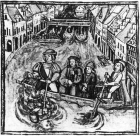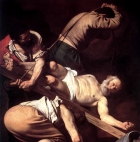Crime and Punishment
One way of approaching the teaching of history beyond 1066 in Key Stage 2 is by taking a broad overview of a theme over time. One popular (and somewhat gruesome) theme is crime and punishment. In this section you will find podcasts, articles and resources to support a study of crime and punishment.
Sort by:
Date (Newest first) | Title A-Z
Show:
All |
Articles |
Podcasts |
Multipage Articles
-

Crime & Punishment - Factors and Time Periods
ArticleClick to view -

Crime and Punishment - Roman to Early Modern
ArticleClick to view -

Female migration to Australia
ArticleClick to view -

Roman Crime and Punishment
ArticleClick to view -

Teaching crime and punishment as a post-1066 theme
ArticleClick to view -

The Bloody Code - Early Modern Crime and Punishment
ArticleClick to view -

Using the back cover image: painted wooden police truncheon
ArticleClick to view

